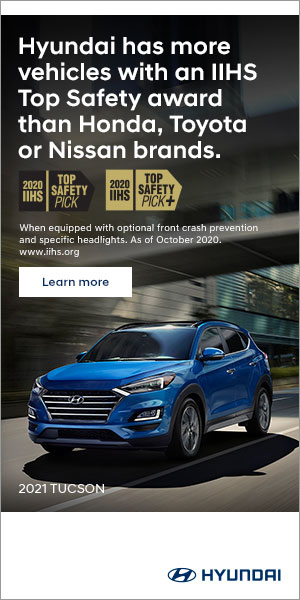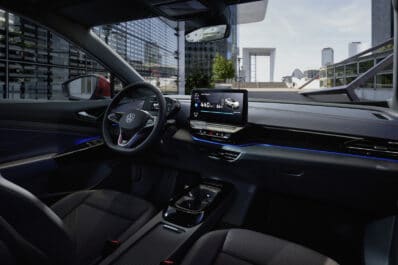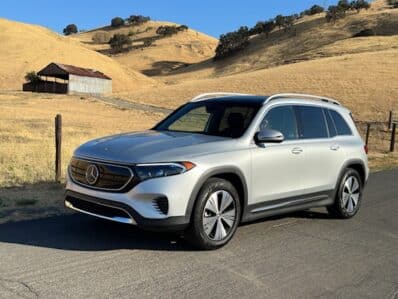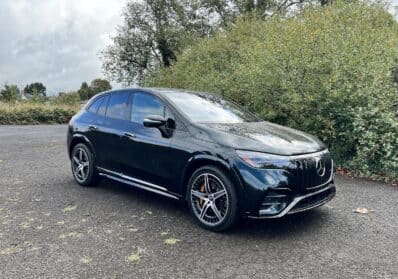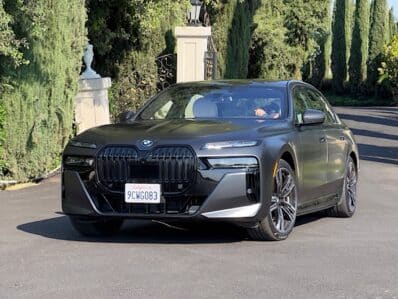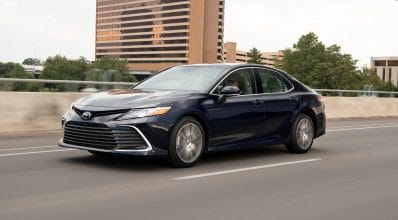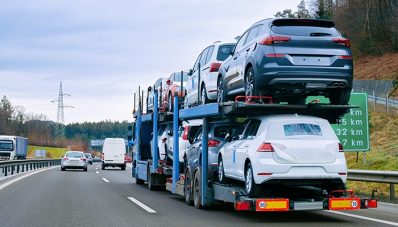If at first you don’t succeed … in Toyota’s case, the next move is to try again with the fourth-generation Tundra.

It’s been two decades since the full-size pickup replaced the old Toyota T100. But while Tundra has gained a loyal following, it’s little more than an afterthought in one of the most important — and profitable — segments in the U.S. market.
Toyota is billing the 2022 Tundra as “a truly American story, from start to finish,” reminding potential buyers — and us media scribes — the new truck was both designed and engineered in the States, and it will be assembled at Toyota’s San Antonio, Texas assembly plant. Even its powertrains will be locally sourced at a plant in Alabama.
But the question is whether that’s enough to make headway in the only U.S. market segment still overwhelmingly dominated by Detroit brands.
Overview

The 2022 Toyota Tundra offers more features, more power and towing capacity, and more versions than ever before. And it targets a broader range of customer needs. That’s something the Japanese automaker hopes will finally help it crack the near-stranglehold Detroit’s Big Three have on the full-size truck segment.
Picking up on the domestic formula, each of Tundra’s six trim grades features unique styling cues, starting with their grilles and badging. Interior details have been upgraded, and the top-line Tundra 1794 edition is the sort of truck that could lure affluent buyers out of their luxury sedan and SUVs.
The new full-size pickup gets a big upgrade when it comes to technology, including an optional 14-inch touchscreen that introduces an all-new operating system with an Amazon Alexa-style voice assistant.
Whatever else, full-size pickups are expected to be able to tow and carry hefty loads, and the 2022 Tundra gets a boost in power, performance, cargo — and up to 12,000 pounds in towing capacity. At the same time, it replaces its old V-8 with a new hybrid engine that ups both mileage and muscle.
Exterior
The project was led by CALTY, Toyota’s advance styling center in California, and the automaker’s R&D center in Ann Arbor, Michigan. U.S. design chief Kevin Hunter describes the new truck’s look as “technical muscle,” suggesting it’s meant to give the appearance of precisely fitting “interlocked shapes, like puzzle pieces coming together.” And “one of our inspirations,” he adds, was the Marvel superhero “Iron Man.”

The overall look is more intimidating — “menacing,” in Hunter’s words — than the outgoing model. And, as has become the norm in the full-size segment, there are notable differences between trim levels, especially when it comes to bumpers, grilles and fascia. The off-road-oriented Tundra TRD Pro, for example, features a skid plate that flows into a grille featuring a built-in light bar. And key exterior trim pieces adopt a sort of black-and-gray camouflage pattern. All 2022 Tundra models share a new blacked-out A-pillar.
All grades now get LED head and taillights, as well as a multifunction tailgate. The cargo bed is an aluminum-reinforced composite but a bedliner upgrade is available. One smart move was to give the Crew Max cab buyer an option of either a 5.5- or 6.5-foot bed. Other cab styles can be ordered with 6.5- or 8.1-foot beds. And depending upon the trim level, wheels of 18 to 20 inches are available.
Toyota did miss a couple opportunities, at least in my mind. It failed to incorporate a bed step-up in the corners of the rear bumper, now a common design feature on most Detroit models. Instead, buyers will need to add an accessory step-up. The good news is that Toyota has nearly doubled the number of aftermarket options available at launch, to 115. The automaker also could have scored points by building storage into the bed walls. And, while there’s an optional 120-volt outlet with the hybrid, it can only handle 400 watts, a fraction of what Ford’s PowerBoost hybrid can deliver.
Interior
All told, there will be six separate grades — though Toyota again decided against adding a heavy-duty package for the Tundra, unlike its Detroit rivals. As with the exterior package, each trim level features unique details and, of course, the higher up you go the more luxury features you get.

The instrument panel on all models adopts a more horizontal layout than the outgoing Tundra, emphasizing the truck’s width. Depending upon model, there’s up to a 14-inch navigation screen dominating the IP, and a 12.3-inch digital gauge cluster is available on mid to upper trim packages. Lower levels get standard analog gauges and a 4.2-inch digital readout.
The Toyota product development team aimed to make maximum use of the cabin’s volume and, among other things, the truck adopts a new, split center armrest design that creates additional storage space in-between. Functionality is key to a modern truck’s appeal. There are plenty of storage nooks in the new Tundra’s interior but, beyond the cutting edge infotainment system, no real groundbreaking features, such as the foldaway shifter found on the new Ford F-150 that creates a large, flat workspace.
Powertrain
Tundra’s “base” i-Force engine, a twin-turbo V-6 displacing 3.5 liters, makes some strong numbers at 389 horsepower and 479 pound-feet of torque. It will be available at launch this autumn. Those who want to upgrade to the new i-Force Max hybrid will have to wait until next spring.

This is a completely different gas-electric system than the one used in so many other Toyota products, starting with the iconic Prius. Those pair a gas engine with two motors and a continuously variable transmission. And that sort of layout would never stand up to the demands of a pickup’s duty cycle.
Both Tundra engines share a common 10-speed transmission. But a single, 48-hp motor drive unit has been fit in between engine and transmission on the 3.5-liter i-Force Max. The electric drive system draws power from a compact nickel-metal hydride battery pack tucked under the rear seats. It’s capable of driving short distances at low speeds in all-electric mode — and can briefly run on battery power alone at highway cruising speeds when power demands are light. When the battery is drawn down, the system still helps boost fuel economy. And, if the motor drive isn’t being used it cuts out of the driveline to reduce frictional losses.
The i-Force Max package punches out 437 hp and 583 lb-ft. The numbers fall in line with the max 450 hp that the various Ford F-150 powertrains can deliver. And it yields a maximum cargo capacity of 1,940 pounds, while towing up to 12,000 pounds.
The TRD Pro package adds some useful features, including a locking rear differential, as well as crawl control, essentially a slow-speed, off-road cruise control. It also gets Fox shocks and an increase in ride height. The off-road package available for various 2022 Tundra models also adds a multi-terrain control. Set it for the road conditions you’ll face and it automatically adjusts a variety of vehicle functions.
As for fuel economy, the i-Force delivers 18 mpg city, 23 highway and 20 combined with rear-wheel drive. That drops to 17/22/19 with all-wheel drive. We’ll have to wait until close to the launch of the i-Force Max for its EPA rating.
Safety and Technology
Gone are the days when a pickup buyer expected little more than a radio. Today’s trucks have grown increasingly sophisticated from a technological standpoint, and the 2022 Toyota Tundra delivers in several key areas.

The new model is the first to get a Toyota version of the new multimedia system also debuting on the 2022 Lexus NX. Developed in-house, it’s a far more intuitive design than the outgoing infotainment package. It features a voice control system capable of recognizing common speech. It comes standard with wireless versions of Apple CarPlay and Android Auto, as well as Toyota Connected Services system.
Again, Toyota focused on ways to use technology to enhance the truck’s ride, handling and work capabilities. There are a variety of cameras that can provide a birds-eye view, and help you keep an eye on what you’re towing.
And to keep things stable and easy to manage, Tundra introduces what may be the easiest-to-manage trailer-tow control system out there. Several key competitors require you to manually measure the size of a trailer and then enter it into an onboard controller. Tundra uses its cameras to calculate those dimensions. Among other things, the truck then can compensate for crosswinds and respond if the trailer starts to sway.
And an optional system automatically allows you to back up your trailer by simply managing throttle and brakes.
As for safety, the new truck also adds the latest version of the Toyota Safety Sense 2.5 technology, including active cruise, lane departure assist, forward collision warning with automated emergency braking, road sign recognition and more.
Driving Impressions
The Tundra has grown bigger with each successive generation. And the 2022 model is an imposing beast. The base powertrain is a more than acceptable option for most buyers, though the i-Force Max hybrid will be the clear choice for those who want to get the most out of their truck. Power comes on quickly and it gives the truck plenty of grunt, whether towing the double-axle RV I hitched up, or making a fast pass on a tight two-lane blacktop. Both engines deliver a solid, guttural roar that reminds you there’s plenty under the hood.

Even on base trims, the gen-four Tundra’s ride is significantly smoother than the outgoing truck. That was particularly noticeable when trailering, but the upgraded suspension also helped the new Tundra to better soak up bumps and potholes when traveling light.
The revised suspension made a big difference when it came to cornering, something I considered a weakness on the old truck. Steering, meanwhile, was precise and reasonably well connected to the road.
Add up all the enhancements, including the new tow features, and the 2022 model should score with those who make serious use of the truck – whether for work or to haul a boat or trailer.
Wrap Up
Toyota is “very bullish” about the 2022 Tundra, marketing chief Lisa Materazzo said during a media drive event last week. The goal is to “sell more than last year,” though there’s little chance that the new truck will seriously dent the dominance of its Detroit rivals.
The new truck doesn’t quite deliver the sort of features that would be needed for a knockout punch. Nonetheless, it’s a good choice for those who trust Toyota — and Tundra’s traditionally bulletproof reputation will be a key selling point.
Pricing could be the deciding point for many buyers but we’ll have to wait a little longer for the numbers. They’ll be released later this month, to the 2022 Toyota Tundra’s December sales launch. More on the i-Force Max will be revealed closer to its on-sale date in spring 2022.
2022 Toyota Tundra — Frequently Asked Questions
What will the 2022 Tundra cost?
While no pricing information has been revealed, there are some educated guesses. With 4-wheel drive, the Tundra will be closer to $40,000, with long-bed versions costing a bit more. On the high end of the range, a 2022 Toyota Tundra in Limited Crew Max 4WD trim may reach $50,000, while the Platinum models and TRD Pro versions are likely to sell for closer to $55,000.
What engine will the 2022 Toyota Tundra have?
Tundra’s “base” i-Force engine, a twin-turbo V-6 displacing 3.5 liters, makes some strong numbers at 389 horsepower and 479 pound-feet of torque. A hybrid is also available, although not likely until this Spring. The i-Force Max package punches out 437 hp and 583 lb-ft.
Where is the 2022 Tundra made?
The fourth-generation Tundra is produced at Toyota’s plant in San Antonio, Texas. The 10-speed automatic transmission is being built at its plant in Alabama.

